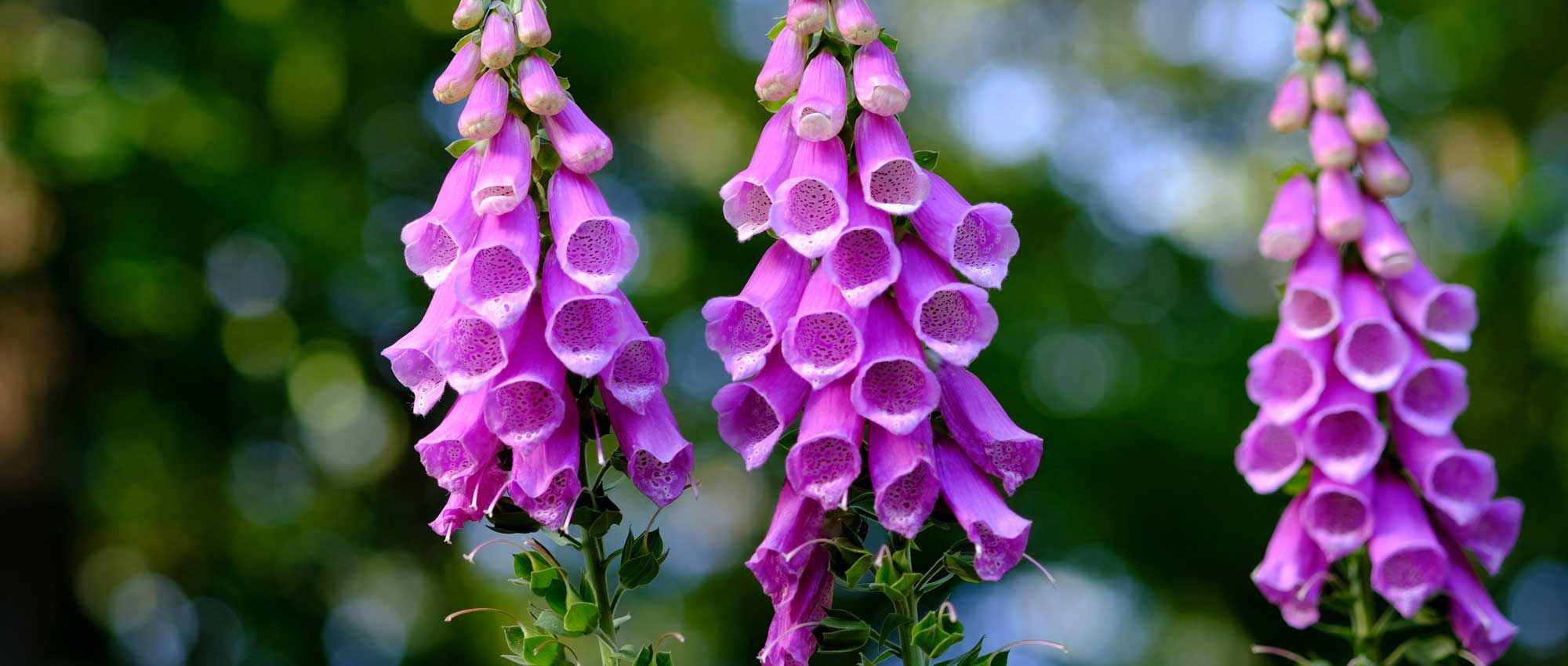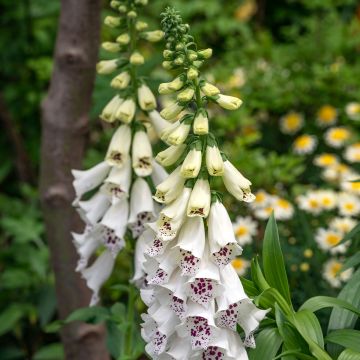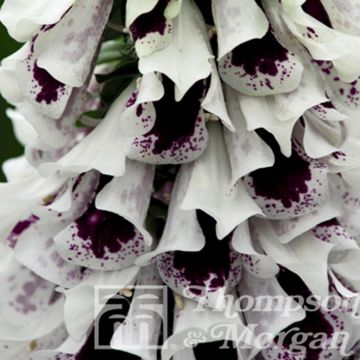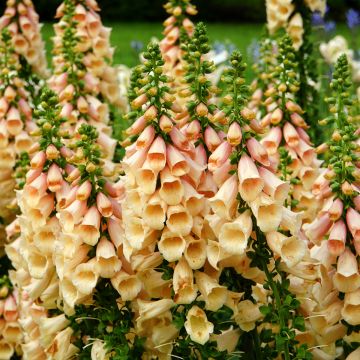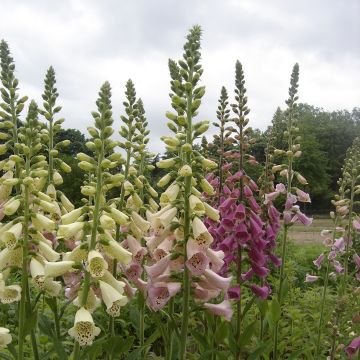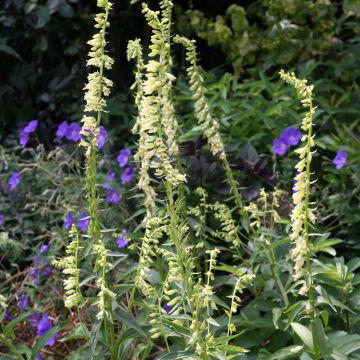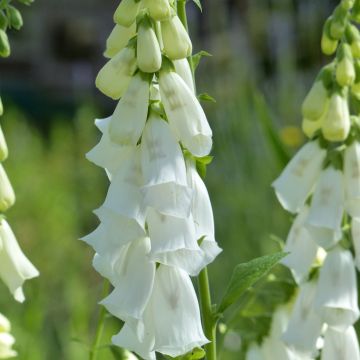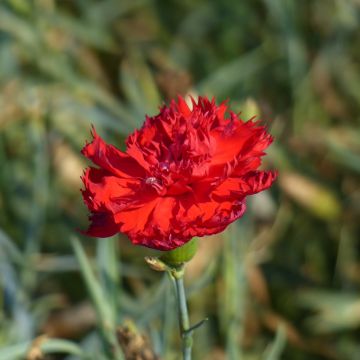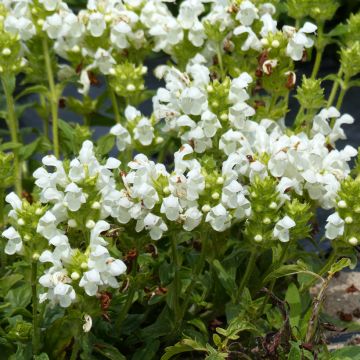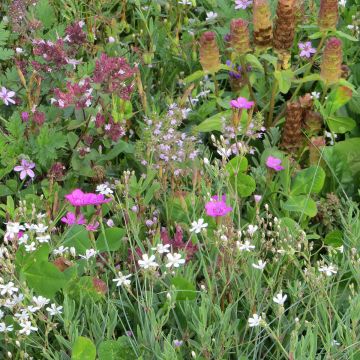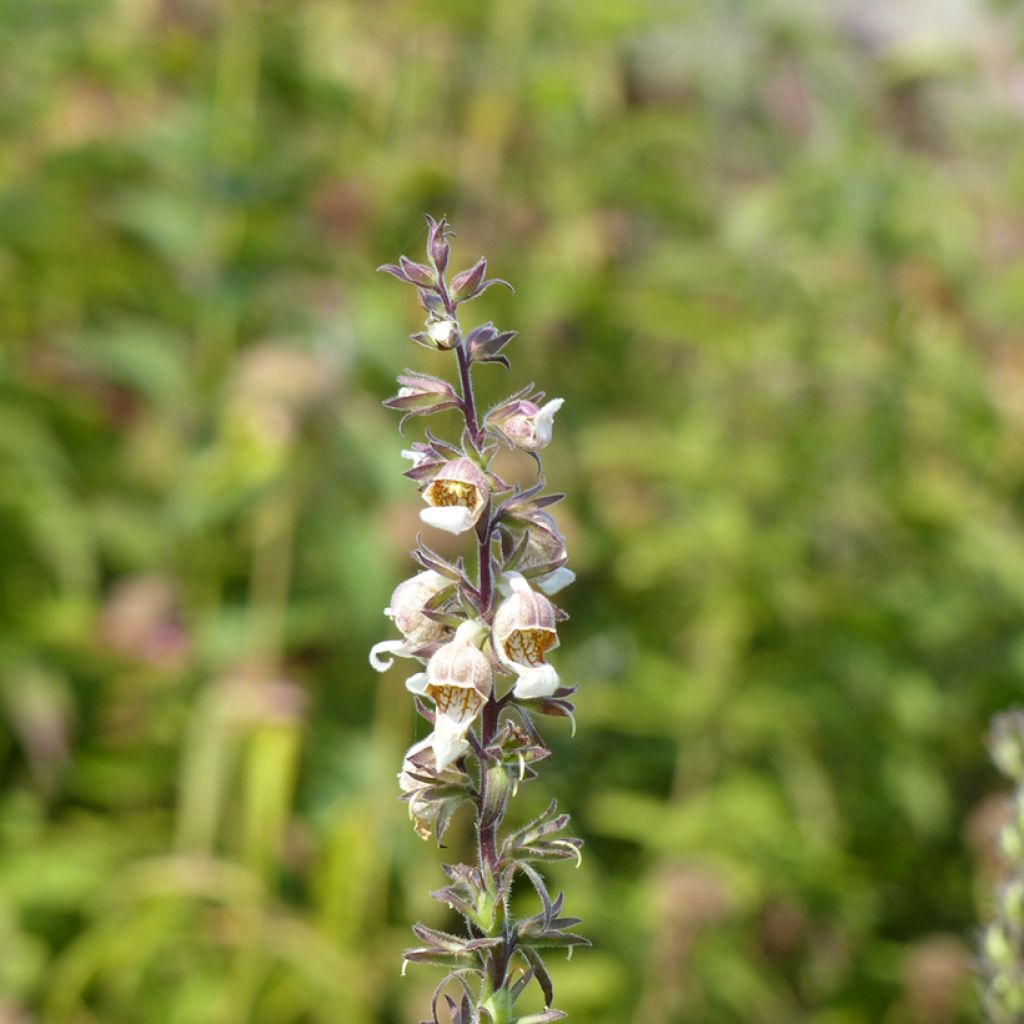

Digitalis lanata Café Crème Seeds - Foxglove
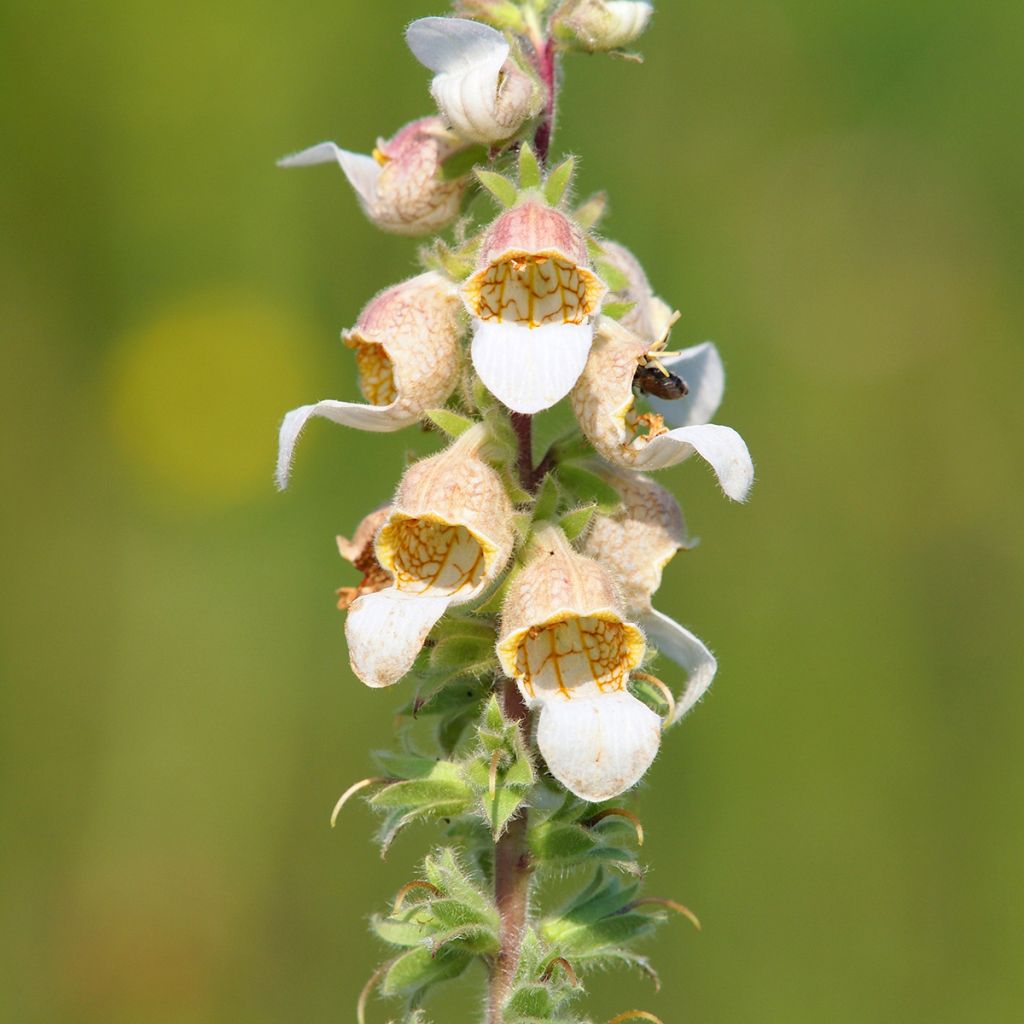

Digitalis lanata Café Crème Seeds - Foxglove
Digitalis lanata Café Crème Seeds - Foxglove
Digitalis lanata Café Crème
Woolly Foxglox, Grecian Foxglove, Austrian Foxglove
Just been sown...
Godefroy D., 09/03/2021
Special offer!
Receive a €20 voucher for any order over €90 (excluding delivery costs, credit notes, and plastic-free options)!
1- Add your favorite plants to your cart.
2- Once you have reached €90, confirm your order (you can even choose the delivery date!).
3- As soon as your order is shipped, you will receive an email containing your voucher code, valid for 3 months (90 days).
Your voucher is unique and can only be used once, for any order with a minimum value of €20, excluding delivery costs.
Can be combined with other current offers, non-divisible and non-refundable.
Home or relay delivery (depending on size and destination)
Schedule delivery date,
and select date in basket
This plant carries a 6 months recovery warranty
More information
We guarantee the quality of our plants for a full growing cycle, and will replace at our expense any plant that fails to recover under normal climatic and planting conditions.
Would this plant suit my garden?
Set up your Plantfit profile →
Description
Digitalis lanata Café Crème, a pretty descendant of the woolly foxglove, is a spectacular looking plant, but paradoxically bears rather discreet blooms in muted tones that should be showcased in the garden. This sometimes biennial, sometimes perennial plant is fabulous when in summer, it sets up its stocky spikes set with curiously coloured, globular flowers in shades of pearl grey, coffee brown and purple. Less demanding in terms of soil and humidity than the traditional foxglove of our woodland edges, this plant will make do with any ordinary soil; even chalky and occasionally dry soils. It will flourish in sunny or partially shaded borders and beds.
Digitale Café Crème is a cultivar of Digitalis lanata, a plant of the family Scrophulariaceae, native to Italy, Hungary, Turkey and the Balkans. It has become naturalized in different regions of North America and Europe, including France. Because this plant is so widespread in the mountains of Greece, English speakers call this plant 'Grecian foxglove'. It can be found in bushes, woodland and grassy areas, typically in sunny to partially shaded areas. It is a biennial and sometimes perennial herbaceous plant, developing from spring onwards, a large, evergreen rosette 30-40 cm in diameter, with simple, hairy, lanceolate, deeply veined, dark green leaves. Depending on the time of sowing, the plant will produce in its second year, from June to August, tall, sturdy, almost black-purple, woolly-looking flower spikes reaching a height of 60-80 cm. The first third of the stem is covered with small leaves while the tips bear numerous, densely clustered flowers. Each flower is made up of a reddish, downy calyx that unfolds a corolla in the form of a bulging tube with wavy edges which extends into a light, pearl grey lip with purple veins. The throat of the flower is yellowish with purple veins and the outside is coffee brown tinted with bronze and mauve. They bloom along the spike starting from the bottom and for a period of 2 to 3 weeks. Each flower hosts a procession of bees and bumblebees, ceaselessly coming to stock up on nectar and pollen. After pollination, capsules (fruit) containing numerous seeds are produced which spontaneously re-seed in the garden, in light soil. It will act more like a perennial if care is taken to prune the flowers before the seeds form.
Install Foxglove Café Crème in the sun or partial shade, in ordinary soil that is not too dry, even in limestone soils. It goes well with pastel coloured roses, bear’s breeches, perennials with small blue flowers such as Geranium or perennial flax. This variety with its subtle but rather unusual colouring will stand out against silvery foliage (silver ragwort, sagebrush) or purple foliage such as that of Loropetalum or Physocarpus. This magnificent plant looks wild and romantic all at once, combining perfectly with the feathery foliage of ferns in open woodland. You can also enjoy this marvel at home, by using it to make sumptuous bouquets.
Foxglove is very rich in active ingredients used to fight against heart arrhythmia and is also grown for medicinal use. The alkaloids it contains are toxic when ingested, but not when touched. As a precautionary measure, wash your hands after handling this plant and keep it away from young children.
Warning: seeds are meant for very experienced gardeners who are used to sowing very fine seeds. These seeds are as fine as dust and are barely visible to the naked eye.
Flowering
Foliage
Plant habit
Safety measures
Botanical data
Digitalis
lanata
Café Crème
Scophulariaceae
Woolly Foxglox, Grecian Foxglove, Austrian Foxglove
Cultivar or hybrid
ingestion
Cette plante est toxique si elle est ingérée volontairement ou involontairement.
Ne la plantez pas là où de jeunes enfants peuvent évoluer, et lavez-vous les mains après l'avoir manipulée.
Pensez à conserver l'étiquette de la plante, à la photographier ou à noter son nom, afin de faciliter le travail des professionnels de santé.
Davantage d'informations sur https://plantes-risque.info
Other Foxglove - Digitalis seeds
View all →Planting and care
Sow foxglove from January to May, on the surface of a moist, good quality, well-drained compost and place it at a temperature between 18-29 °C. Cover the seeds lightly with some vermiculite or a thin layer of sand mixed with compost. Place in a mini-greenhouse or polythene bag until germination, which usually takes 14-30 days. Keep the seedlings close to the light, as this helps germination.
Another technique consists of sowing in an unheated greenhouse since some seeds require a period of chilling to lift their dormancy.
Prick seedlings out when they are large enough to be handled, in 8 cm diameter pots or in planters. Gradually acclimatize the plants to cooler conditions for a few weeks before planting them out after the last frosts, keeping them space apart by 45 to 60 cm. Early sown foxgloves can sometimes flower as early as their first year.
Woolly foxglove and its varieties prefer sunny positions but tolerate partial shade well. They are very undemanding in terms of soil, as long as it is well-drained and well-prepared. Plant them in any good garden soil that is slightly acid, neutral or even alkaline. They are fully hardy plants, but their life span is rather short. On the other hand, they can self-seed prolifically in the garden, but the plants produced are rarely identical to the mother plants especially in the case of specially selected breeds.
Sowing period
Intended location
Planting & care advice
-
, onOrder confirmed
Reply from on Promesse de fleurs
Similar products
Haven't found what you were looking for?
Hardiness is the lowest winter temperature a plant can endure without suffering serious damage or even dying. However, hardiness is affected by location (a sheltered area, such as a patio), protection (winter cover) and soil type (hardiness is improved by well-drained soil).

Photo Sharing Terms & Conditions
In order to encourage gardeners to interact and share their experiences, Promesse de fleurs offers various media enabling content to be uploaded onto its Site - in particular via the ‘Photo sharing’ module.
The User agrees to refrain from:
- Posting any content that is illegal, prejudicial, insulting, racist, inciteful to hatred, revisionist, contrary to public decency, that infringes on privacy or on the privacy rights of third parties, in particular the publicity rights of persons and goods, intellectual property rights, or the right to privacy.
- Submitting content on behalf of a third party;
- Impersonate the identity of a third party and/or publish any personal information about a third party;
In general, the User undertakes to refrain from any unethical behaviour.
All Content (in particular text, comments, files, images, photos, videos, creative works, etc.), which may be subject to property or intellectual property rights, image or other private rights, shall remain the property of the User, subject to the limited rights granted by the terms of the licence granted by Promesse de fleurs as stated below. Users are at liberty to publish or not to publish such Content on the Site, notably via the ‘Photo Sharing’ facility, and accept that this Content shall be made public and freely accessible, notably on the Internet.
Users further acknowledge, undertake to have ,and guarantee that they hold all necessary rights and permissions to publish such material on the Site, in particular with regard to the legislation in force pertaining to any privacy, property, intellectual property, image, or contractual rights, or rights of any other nature. By publishing such Content on the Site, Users acknowledge accepting full liability as publishers of the Content within the meaning of the law, and grant Promesse de fleurs, free of charge, an inclusive, worldwide licence for the said Content for the entire duration of its publication, including all reproduction, representation, up/downloading, displaying, performing, transmission, and storage rights.
Users also grant permission for their name to be linked to the Content and accept that this link may not always be made available.
By engaging in posting material, Users consent to their Content becoming automatically accessible on the Internet, in particular on other sites and/or blogs and/or web pages of the Promesse de fleurs site, including in particular social pages and the Promesse de fleurs catalogue.
Users may secure the removal of entrusted content free of charge by issuing a simple request via our contact form.
The flowering period indicated on our website applies to countries and regions located in USDA zone 8 (France, the United Kingdom, Ireland, the Netherlands, etc.)
It will vary according to where you live:
- In zones 9 to 10 (Italy, Spain, Greece, etc.), flowering will occur about 2 to 4 weeks earlier.
- In zones 6 to 7 (Germany, Poland, Slovenia, and lower mountainous regions), flowering will be delayed by 2 to 3 weeks.
- In zone 5 (Central Europe, Scandinavia), blooming will be delayed by 3 to 5 weeks.
In temperate climates, pruning of spring-flowering shrubs (forsythia, spireas, etc.) should be done just after flowering.
Pruning of summer-flowering shrubs (Indian Lilac, Perovskia, etc.) can be done in winter or spring.
In cold regions as well as with frost-sensitive plants, avoid pruning too early when severe frosts may still occur.
The planting period indicated on our website applies to countries and regions located in USDA zone 8 (France, United Kingdom, Ireland, Netherlands).
It will vary according to where you live:
- In Mediterranean zones (Marseille, Madrid, Milan, etc.), autumn and winter are the best planting periods.
- In continental zones (Strasbourg, Munich, Vienna, etc.), delay planting by 2 to 3 weeks in spring and bring it forward by 2 to 4 weeks in autumn.
- In mountainous regions (the Alps, Pyrenees, Carpathians, etc.), it is best to plant in late spring (May-June) or late summer (August-September).
The harvesting period indicated on our website applies to countries and regions in USDA zone 8 (France, England, Ireland, the Netherlands).
In colder areas (Scandinavia, Poland, Austria...) fruit and vegetable harvests are likely to be delayed by 3-4 weeks.
In warmer areas (Italy, Spain, Greece, etc.), harvesting will probably take place earlier, depending on weather conditions.
The sowing periods indicated on our website apply to countries and regions within USDA Zone 8 (France, UK, Ireland, Netherlands).
In colder areas (Scandinavia, Poland, Austria...), delay any outdoor sowing by 3-4 weeks, or sow under glass.
In warmer climes (Italy, Spain, Greece, etc.), bring outdoor sowing forward by a few weeks.






























